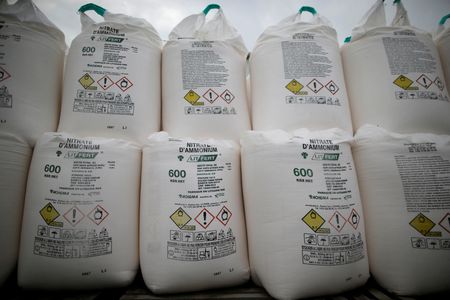Fertilizer Crisis Deepens as Yara Joins Azoty in Idling More Ammonia Capacity
2022.08.25 10:33

By Geoffrey Smith
Investing.com — Europe’s farmers took another hit on Thursday as fertilizer giant Yara (OL:YAR) said it will cut its output further due to record high gas prices.
The Norwegian company had already cut ammonia capacity by 1.3 million tons and fertilizer capacity by 1.7 million tons in June for the same reason. However, European gas prices have surged again in recent days after Russian gas monopoly Gazprom (MCX:GAZP) said it will close the Nord Stream gas pipeline for three days of unscheduled maintenance at the end of this month, raising fears of an extended and politically-motivated shutdown.
The news came as benchmark natural gas prices for northwest Europe broke through 300 euros a megawatt-hour in early trading on Thursday. That’s equivalent to an oil price of over $510 a barrel and more than 10 times the prevailing price before the Ukraine crisis started.
After the new cuts, Yara will now have some 3.1 million tons of ammonia capacity and 4.0 million of fertilizer capacity idle in Europe.
The news comes a day after another big European fertilizer company, Poland’s Grupa Azoty (WA:ATTP) said it too will suspend ammonia production due to high gas prices, while its listed subsidiary Pulawy (WA:ZAPP) will cut output to around 10% of normal levels. The shutdowns are likely to keep fertilizer prices sky high, which may force farmers to cut back on their purchases and face lower crop yields next year.
Ammonia is a basic feedstock not just for nitrate fertilizers but for many other organic chemicals. As such, production shutdowns are likely to have a wider effect on European industry. Energy-intensive industry is already reeling from high power prices, caused not only by the shortage of gas for power generation, but by a continent-wide drought that has hit hydropower and nuclear power output.
Yara said it will “use its global sourcing and production system to optimize operations and meet customer demand, including continued nitrate production using imported ammonia when feasible.”








